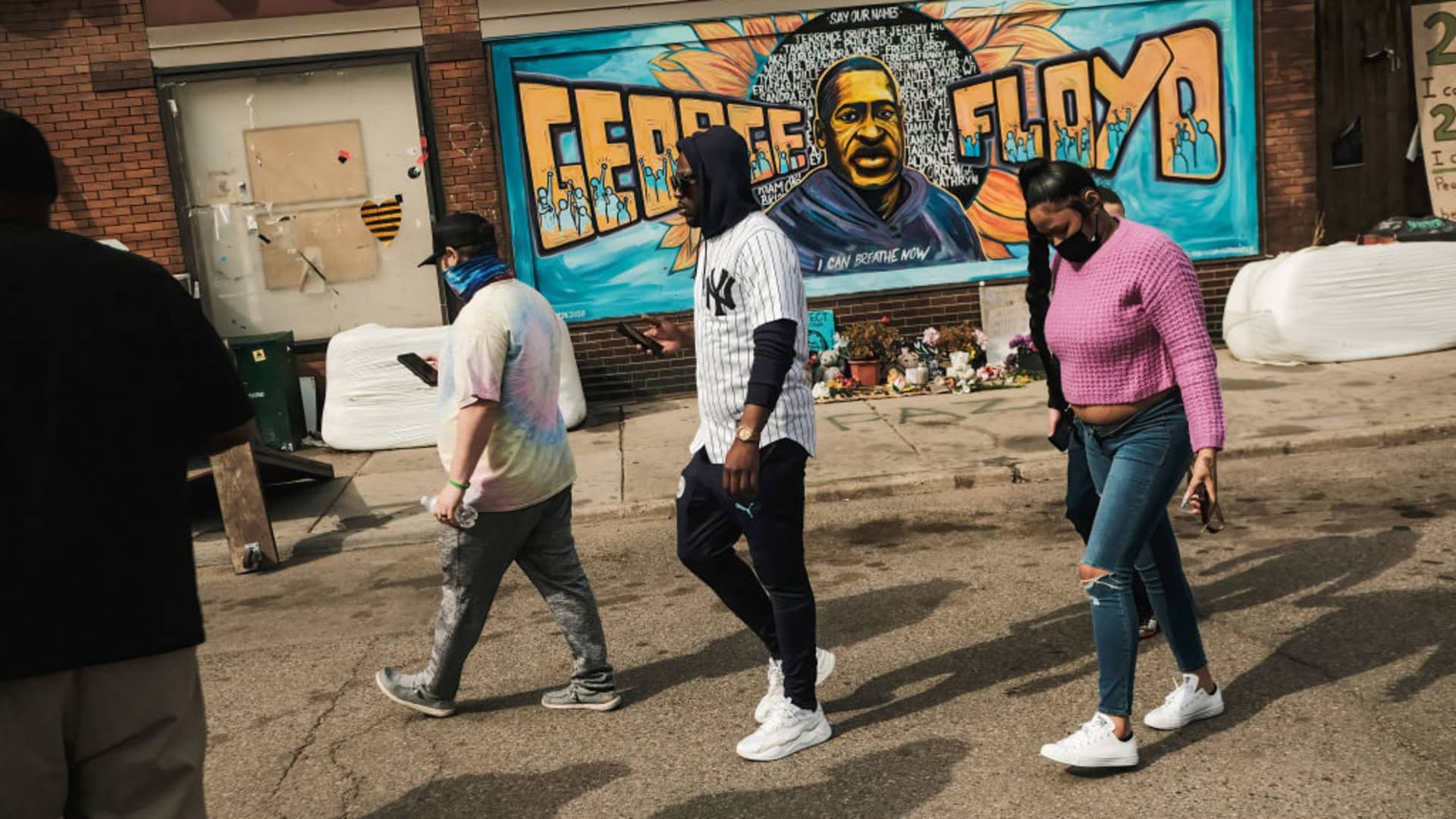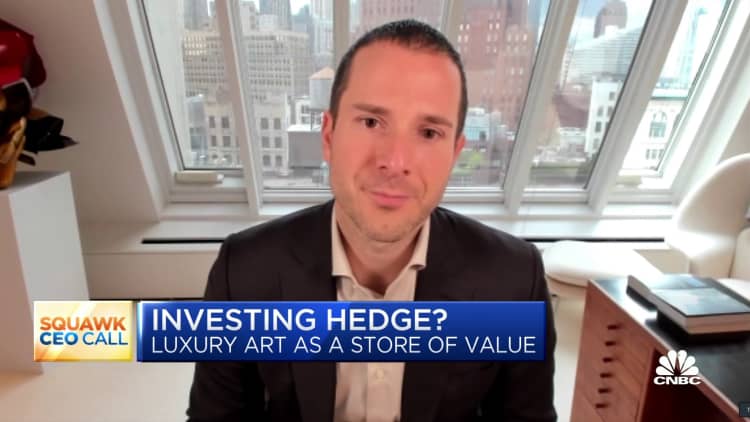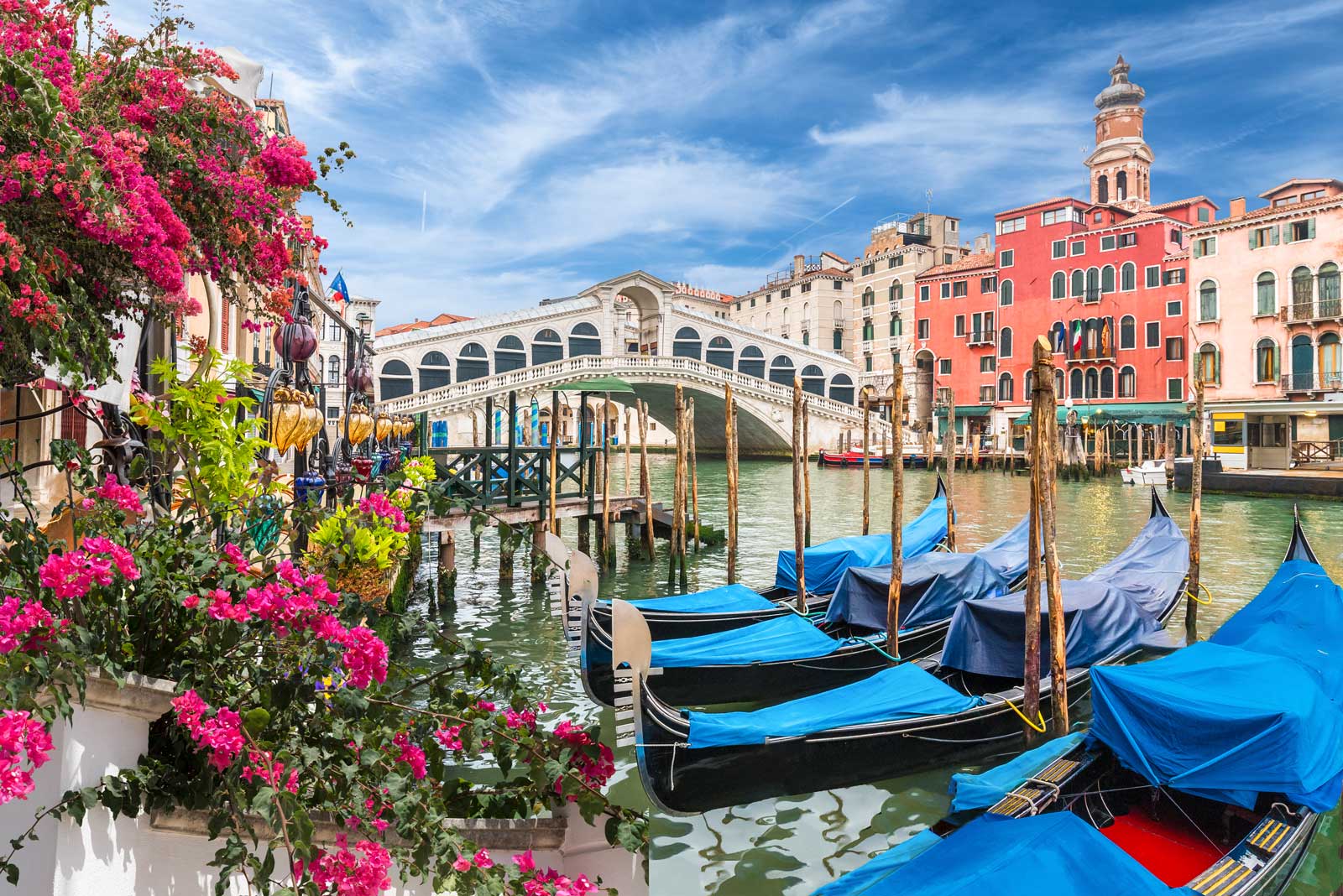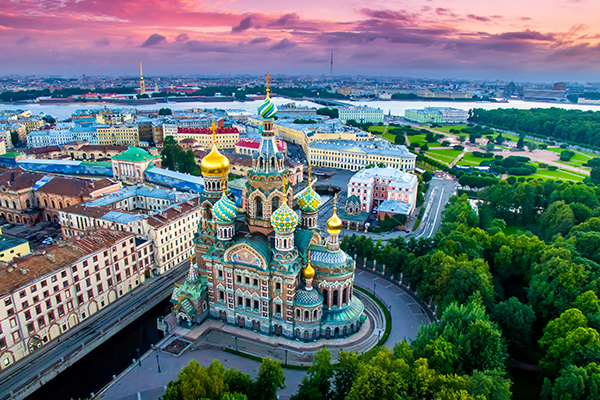How representation of Black artists in galleries, museums is changing
A push for more Black representation in the art industry is changing what is displayed on gallery and museum walls, and in some cases leading to higher sales.

People walk past a mural of George Floyd by the Cup Foods where he was killed by Minneapolis Police Officer Derek Chauvin in Minneapolis.
Sopa Images | Lightrocket | Getty Images
When George Floyd was murdered by police in 2020, the event brought a "scary" time for the Minneapolis neighborhood where it occurred.
"Everything was on fire," said Lamar Peterson, a contemporary art painter who lives less than a mile from the scene.
"You couldn't have your windows open because of the smoke," Peterson said. "It just felt like it was Armageddon, the end of times."
The streets were filled both with protesters and also looters, Peterson remembers.
More from Personal Finance:
'Baby bond' proposal would give every child $1,000 at birth
Demise of student loan forgiveness would be 'disastrous' for Black Americans
IRS about 3 to 5 times more likely to audit Black Americans' tax returns
For Peterson, it was a personally difficult for another reason: Due to the lockdown at the time, he lost access to his studio based in the University of Minnesota building where he teaches.
Peterson, 49, an oil painter, was unable to do his work at home in a closed space.
"That was really hard for me," Peterson said. "My outlet is my artwork."
Today, Peterson has recently wrapped up his latest show at the Fredericks & Freiser art gallery in the Chelsea neighborhood of New York.
The works are the opposite of the dark time he lived through in 2020, with bright garden landscapes and Black figures that draw inspiration from the 1970s and 80s cartoons that Peterson grew up on.
The Proud Gardener, Bouquet, 2022, by Lamar Peterson Oil on canvas 60 x 72 inches
Cary Whittier; Courtesy Fredericks & Freiser, NY
The paintings are about appreciating the fleeting beauty in life, he said, inspired by his own love of gardening and his father's recent death.
"Flowers can be a metaphor for human life, too," Peterson said. "There's a beginning and an end."
The show, titled "Proud Gardener," sold "very well" and is one of Peterson's most successful shows to date, according to Andrew Freiser, a co-owner of the gallery. Prices for the works ranged from $15,000 to $60,000, depending on size.
Peterson, who started showing his work in the early 2000s, has noticed a shift in the art market.
"There's a lot more support for Black artists that kind of came out of George Floyd's murder and institutions realizing that they need to do more," Peterson said.
'Absolutely genuine' rise in interest in Black artists
Artist Kehinde Wiley, left, shakes hands with Barack Obama at the unveiling of his portrait of the former president at the Smithsonian's National Portrait Gallery in Washington, D.C., on Feb. 12, 2018.
Saul Loeb | Afp | Getty Images
The market for work by Black American artists grew by nearly 400% between 2008 and 2021, according to a recent report from art market website ArtNet.
However, art in that category represented just 1.9%, or $3.6 billion, of global auction sales between 2008 and mid-2022, the report found.
The growth has not been consistent, according to ArtNet. Acquisitions of work by Black American artists peaked in 2015, two years after the start of the Black Lives Matter movement.
Still, there continues to be a higher interest in African American artists that is "absolutely genuine," according to Sophie Neuendorf, vice president at ArtNet.
"Museums face a lot of criticism for showing primarily male white artists," Neuendorf said.
There are a lot of artists that I think have risen to a level of prominence that have really placed them at the center of the contemporary art narrative.
Drew Watson
head of art services at Bank of America
"There's been a real effort to consciously show more exhibitions of female, as well as African American artists," she said.
That "sea change" in recent years has prompted museum shows of artists including Kerry James Marshall, Michael Armitage, Lynette Yiadom-Boakye and Jennifer Packer, noted Lucius Elliott, head of The Now Evening Auction at Sotheby's, which focuses on contemporary works.
"My impression is there are vastly increased number of solo shows and group shows dedicated to Black artists in London, in Paris, in New York, across the United States," Elliott said.
"Something fundamental has shifted here, and that's driven I think more than anything by a desire to correct or redress a historical oversight, both in the market, but also for institutional representation," Elliott said.
Other Black artists have gained importance, including Kehinde Wiley, who painted a portrait of former President Barack Obama, and Hank Willis Thomas, who sculpted the statue "The Embrace," of Martin Luther King, Jr., and Coretta Scott King that was recently unveiled in Boston.

"There are a lot of artists that I think have risen to a level of prominence that have really placed them at the center of the contemporary art narrative," said Drew Watson, head of art services at Bank of America.
Works from established artists like Kerry James Marshall that depict Black figures are influencing the work of new artists and creating a lineage, Elliott noted.
"These are not images of degradation, but they're images of dignity," Elliott said.
Painter Xavier Daniels' most recent show titled "Cry Like a Man" features portraits of Black men with vivid colors like purple, blue and white, meant to convey royalty, freedom and purity.
Prices for the works at the Black-owned Richard Beavers gallery in New York's SoHo neighborhood ranged from between $30,000 to $42,000.
The male portraits are inspired by other Black men with whom Daniels, 42, had either worked during his 13-year career as a firefighter or been a student at an all-male predominantly Black college, he said.
The works in the recent show also touch on the mental health struggle Black men go through, with portions of some of the faces missing to reflect how negative stereotypes may lead them to not feel whole.
At the same time, the figures are empowered and free to be themselves, Daniels said.
"I'm just taking our experiences and creating art and a language I feel would help other Black males feel great about who they are," he said.
Tips for investing in art
If you think you may want to invest in art, experts have some tips for getting started.
Look before you buy: Before you purchase any art, it is a good idea to take your time, go to galleries in person, see a lot of works, according to Freiser, the co-owner of the namesake Chelsea gallery. Ideally, you should look over at least several show cycles to decide what you like, he said."There's no way to look at art over a period of time without having your eye develop," Freiser said. Bank of America's Watson said he has met collectors who waited five years before making their first art purchase, which allowed them to train their eye and develop relationships with dealers and auction houses.
"When that time does come and you are ready to take the plunge, you've done your homework," Watson said.Be realistic about appreciation: At Bank of America, art is not considered a pure investment, though it is an asset class, according to Watson. As such, the asset class wouldn't be subject to quarterly reviews, like stocks and bonds, he said. It also comes with greater transaction costs, specific tax treatment and costs to conserve it.
"When you think about it, it's actually a cash flow negative asset," Watson said. Whether or not a piece becomes more valuable varies on a case-by-case basis.
"If you're buying from an artist who's up and coming, and you see that pop, it can certainly happen," said Jocelyn D. Wright, a certified financial planner and managing partner at PF Wealth Management Group in Jenkintown, Pennsylvania.Buy what you like: "My advice would be to always collect for passion, but with an investment view," said Neuendorf, the ArtNet VP. If you're going to display the work in your home, you want to be sure you like it, while also thinking of it as an investment, according to Wright. Also be sure to find out the artists' stories when acquiring new pieces, she said.Adjust your financial plan: Once you make a purchase, be sure to get it appraised, Wright said. Add the work to your homeowner's insurance policy, or consider a separate policy to protect its value, she said. Also be sure to budget for other costs, like framing or other features that may help protect the work.
Keep in mind that art investments tend to be illiquid. If you try to sell a work quickly, you may not get the full value, Wright noted. "It would certainly be the item of last resort to try to liquidate," she said.Cultivate relationships: Art dealers are looking for buyers who are going to be on the artist's team, according to Freiser. Being open to lending the working for exhibits and acquiring other work from the artist are among the qualities sellers look for, he said.
"We're looking for a smart collector who's interested in putting a collection over a period of time that brings value to the art as much as the art brings value to them," Freiser said. –L.K.

 MikeTyes
MikeTyes 































